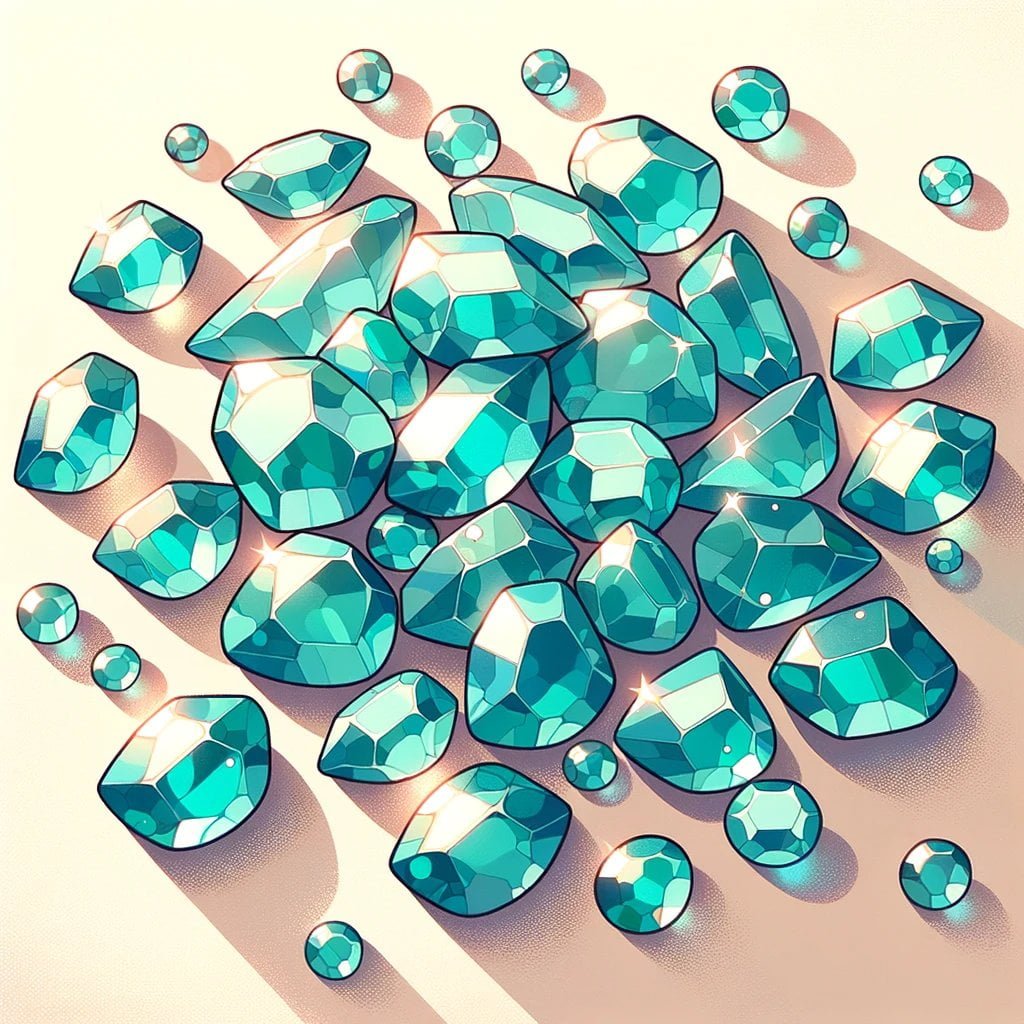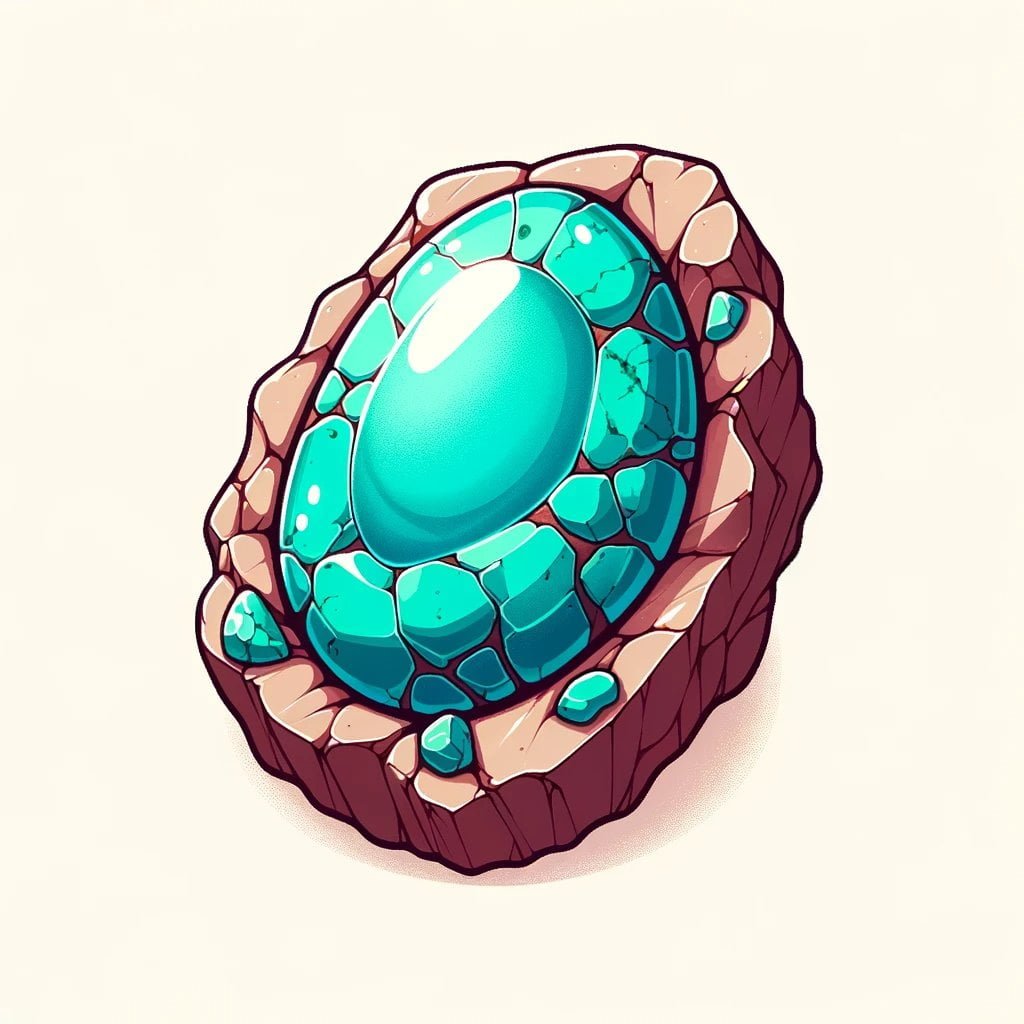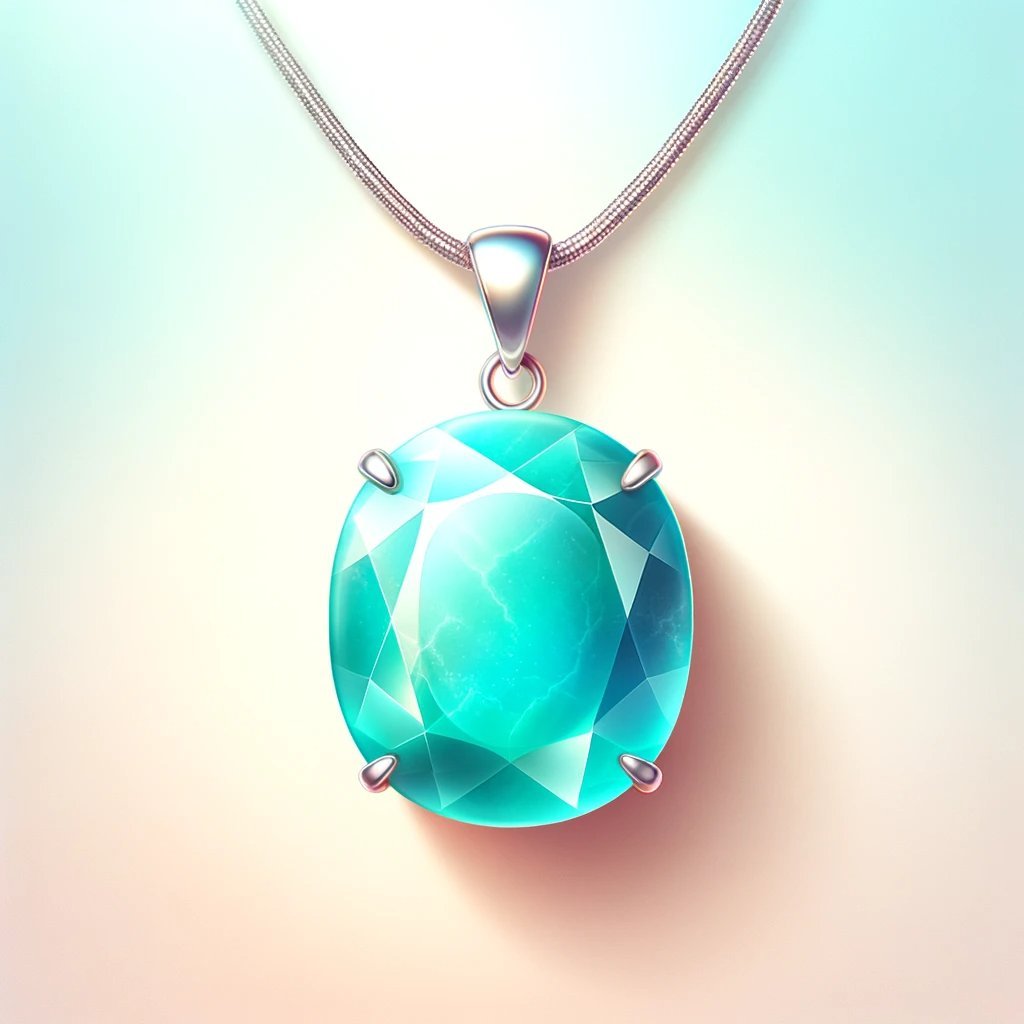Are you prepared to be escorted through time and culture as we investigate the enigmatic realm of the Turquoise Stone? Prepare to be captivated as we delve into the cultural significance and intriguing history of this enthralling gem. With a strong interest in unearthing obscure narratives, I cordially invite you to accompany me on an investigation into the remarkable attributes, complex configurations, and therapeutic potential of this captivating gemstone. Anticipate to be mesmerized by the enchanting allure of the turquoise stone, which has had an immense impact throughout history. Embark on an exploration to reveal the enigmatic intricacies of this gemstone.
Turquoise Stone
For centuries, individuals have been mesmerized by the distinctive qualities and entrancing blue-to-green hue of the turquoise stone. With its exquisite coloration, this uncommon gemstone possesses a profound historical background and cultural importance that perpetually captivates both gem aficionados and historians.
An ancient gem of origin
Turquoise Stone’s history originates in antiquity, and its origins date back thousands of years. It was extracted early on and was highly regarded as a valuable gemstone. Indeed, numerous archaeological sites have been depleted as a result of the intense demand and value of the ore.
The journey of Turquoise Stone from its place of origin to the rest of the globe is also fascinating. The term “turquoise” originates from the Old French word “turquois,” which translates to “Turkish” and refers to the gemstone’s initial introduction to Europe via the Ottoman Empire. Symbolizing elegance and opulence, this gem swiftly captivated the attention of individuals across the globe.
An Intuition and Spirituality Symbol
Across cultures and time periods, turquoise stone has been associated with a variety of symbolic connotations. It has been held in high regard as a sacred stone, with the belief that it possesses supernatural abilities and bestows prosperity upon whoever bears it. This belief has resulted in numerous ancient traditions employing it as a talisman.
During Ancient Egypt, the ruling class adorned themselves with jewelry crafted from turquoise stone, which was regarded as a potent and protective symbol. The delicate translucent hues of the gemstone, including sky blue, powder blue, and blue-green, were exceedingly valued due to their mesmerizing aesthetics.
Formation and Distinctive Markers
A comprehension of the process by which turquoise stone is formed enhances its aura of mystique. Copper-sulfide hydrothermal deposition is generally a pivotal factor in the formation of turquoise deposits. As a consequence of these hydrothermal fluids leaching copper from a host rock, this mesmerizing gem is formed.
Turquoise Stone is distinguished by virtue of its colossal and cryptocrystalline structure. This indicates that solitary crystal formation is uncommon, with masses appearing opaque or semitranslucent. Its subvitreous to waxy sheen lends an air of sophistication to the gem’s mesmerizing appearance.
Turquoise stone may exhibit intriguing qualities, including pyrite specks or intricate, dark limonite veining. It is even capable of pseudomorphically substituting for fossils and minerals. Additionally, an intriguing variant known as odontolite exists, comprising fossilized bone or ivory that has undergone modifications resembling turquoise.
The Healing and Powerful Properties of Turquoise
In addition to its aesthetic appeal, turquoise stone is thought to have a multitude of metaphysical and therapeutic attributes. Its reputation for fostering emotional equilibrium, tranquility, and serenity renders it a coveted gemstone among individuals in pursuit of internal harmony. It has been revered throughout history, from ancient civilizations to the present, for its capacity to unite people with their spiritual selves.
By resonating with the vocal chakra, the distinctive vibration of turquoise stone promotes unobstructed communication and self-expression. Furthermore, it has been observed to strengthen intuition and offer defense against negative energy. Whether utilized in meditation or adorned as jewelry, the captivating energy of turquoise stone profoundly affects those who behold it.
Final Thoughts
Undoubtedly a gemstone of mystique, the Turquoise Stone has withstood the test of time. Due to its distinct qualities, captivating history, and cultural significance, it is a treasure worthy of investigation. Having been formed via hydrothermal processes, this gemstone has endured as a potent talisman and continues to represent aesthetic appeal, spirituality, and prosperity.
As we further explore the realm of turquoise stone, its concealed narratives and secrets become more apparent. Therefore, let us commence this intriguing expedition collectively, wherein each unexpected turn unveils an additional aspect of the Turquoise Stone, establishing a link to its mesmerizing history and the lasting impact it has on our planet.
Turquoise, along with other prehistoric gemstones, is one of the earliest known to humanity. People have been enthralled by its vivid blue-green tint for centuries. If you’re curious to learn more about the fascinating history and properties of this enchanting gem, click here: interesting facts about turquoise. Explore the realm of turquoise and learn why civilizations throughout history, from ancient Egypt to Native America, have held it in such high regard. Follow your curiosity wherever you go.
People have been captivated by the enthralling turquoise stone gem for centuries. Due to its captivating hue and distinctive characteristics, it is a highly coveted gemstone. If you are in search of enthralling details regarding turquoise, please visit this page to discover the gemstone’s concealed secrets. To learn astounding, lesser-known facts about turquoise, please visit this link. Additionally, if you are prepared for an unforgettable journey into turquoise, please click here to proceed. Prepare to be mesmerized by the allure and enigma depicted within the captivating realm of turquoise.
TurquCharles: An Unusual Gemstone Bearing Cultural Importance, by Ryan Charles
Gem devotees and historians have been enthralled by turquoise stones for centuries on account of their uncommon blue-to-green hue and exceptional qualities. Rich in cultural significance and historical background, these precious gems are truly intriguing.
A succinct overview of turquoise stones and their cultural importance
For turquoise,stone Turquoise stone, characterized by its vivid blue-to-green hue, has been extracted and is highly regarded as a valuable jewel. The gem’s nomenclature, “turquoise,” originates from the Old French term “turquois,” which signified “Turkish” and denoted its origin in the Ottoman Empire, which introduced it to Europe.
Utilized as a talisman, Turquoiseostones acquired a variety of symbolic connotations throughout history. In the context of ancient Egypt, for instance, it represented strength and protection. The captivating color and symbolic significance of this gemstone have rendered it exceedingly desirable.
The Aspects and Development of Turquoise Stone
The process by which turquoiseostonetone is formed is copper sulfide hydrothermal deposition. Its colossal and cryptocrystalline structure is singular; single crystals are uncommon. One of the captivating attributes of this gemstone is its capacity to exhibit distinctive qualities, including pyrite specks or limonite veining.
Metaphysical and Therapeutic Attributes of Turquoise Stone
It is known that turquoise stone has metaphysical and therapeutic qualities. It is said to foster equilibrium, clarity of communication, and serenity. By aligning with the vocal chakra, this gem promotes self-expression and enhances intuition.
In summary, explore the enigmatic allure of turquoise stones.
Turquoise stones have a captivating history and a mesmerizing appearance that continue to captivate individuals. These jewels grant a sense of awe and a distinct link to antiquity by virtue of their symbolic connotations and therapeutic attributes. Investigate the hidden treaturquoisetstonesoise stones conceal while appreciating their allure and mystique.
“Turquoise stones have a mesmerizing beauty and a rich history that continue to captivate people today.”
FAQ
To what does turquoise refer?
Turquoise, an opaque mineral ranging in color from blue to green, is composed of hydrous phosphates of aluminum and copper.
Why is turquoise regarded as a precious and valuable gemstone?
In finer grades, turquoise is uncommon and expensive because of its distinctive coloration, which has been coveted and admired for millennia.
From where does the term “turquoise” originate?
Since the 17th century, the term “turquoise” has been derived from the Old French word “turquois,” which translates to “Turkish.” This is due to the fact that the mineral was initially introduced to Europe via the Ottoman Empire.
Inquiry: What cultural associations and beliefs are associated with the gemstone turquoise?
In numerous cultures, turquoise has been held in high regard as a sacred stone, imbued with the power to bestow good fortune or function as a talisman.
What is the process by which marine material is generated, and what are its physical attributes?
The formation of turquoise deposits generally coincides with the hydrothermal accumulation of copper sulfides. A variety of hues, including white, powder blue, sky blue, blue-green, and yellowish green, comprise the spectrum of turquoise. In general,lusterheen ranges from waxy to subvitreous, and it is opaque; the formation of solitary crystals is infrequent.
- Unlock Water’s Symbolism: A Cross-Cultural Exploration - April 20, 2025
- Identify Black and White Snakes: Venomous or Harmless? - April 20, 2025
- Unlocking Potential: Origins High School’s NYC Story - April 20, 2025


















